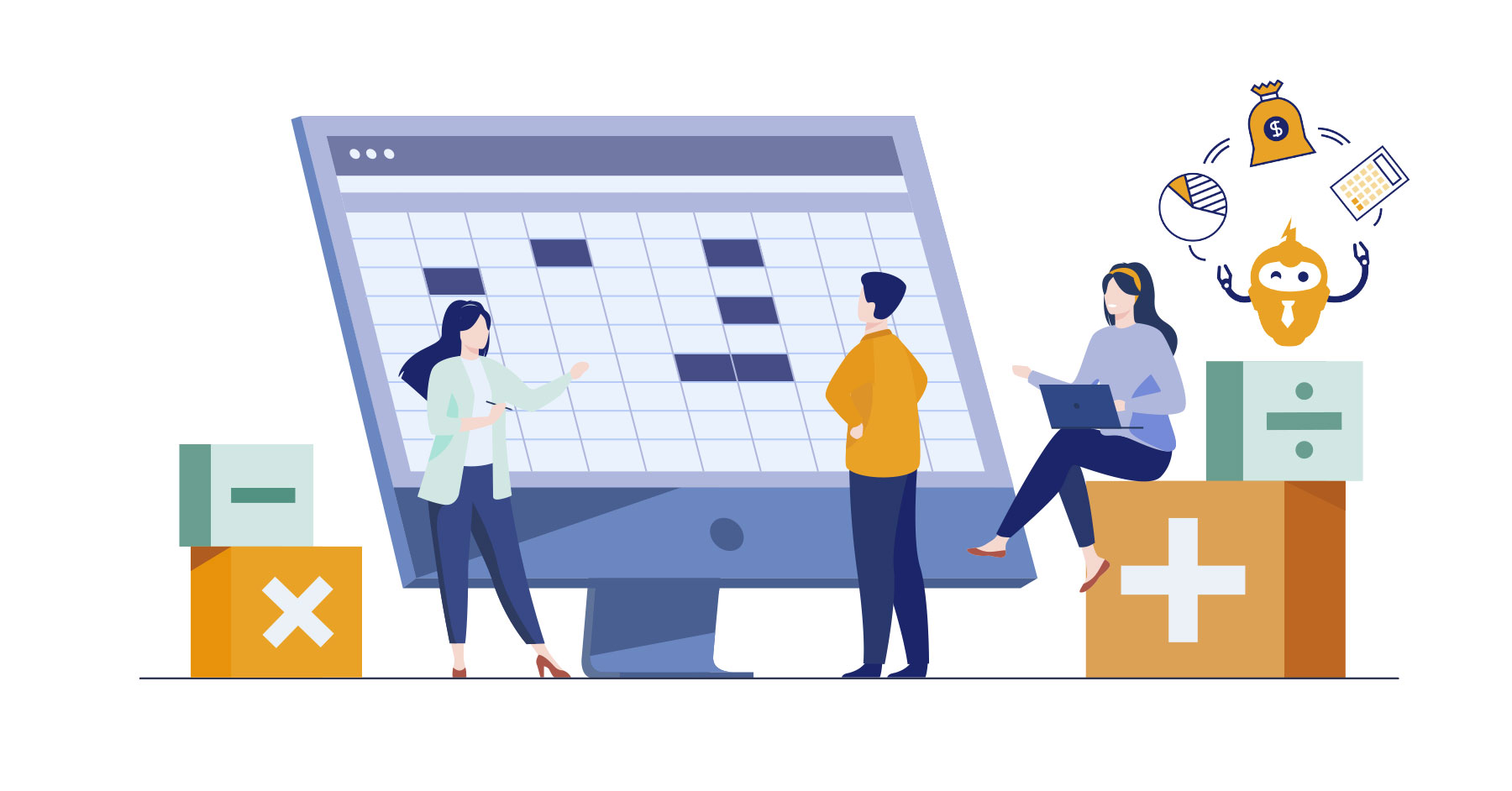As an accountant, you have a lot on your plate. You’re managing the company’s finances – the lifeblood of the business. It’s messy to balance the accounts receivable and payable by yourself, even with the help of accounting software.
While the seasoned accountants and bookkeepers are calm and organized, others may be running around in a panic to sort out all the paperwork.
In order to file accurate returns and get the highest deductions, your books need to be in pristine condition. Other than the submissions, a major role accountants play is maximising cash flow for the company.
Here are some of the best accounting practices and financial accounting hacks that can make your work a whole lot simpler. We’ll split them into three categories: Invoicing, receivables and payables.
How to Optimize your Invoicing Processes
Outgoing Invoices
You’d imagine billing is fairly straightforward. But accounting teams, especially in small businesses, struggle in this area. Some make consistent invoice errors regarding units or measure, pricing, customer accounts and other crucial data.
Some fail to generate invoices in a timely fashion (or at all). And when things get desperate, some accounting teams end up billing clients outside the system, just to meet due dates. This confusion spells unprofessionalism and errors all over.
The key here is to establish a billing process that ensures accurate and timely invoicing.
Here’s what to do:
- Automation: Send invoices on time, reduce time spent manually generating invoices and reduce human error.
- Electronic billing systems: Electronic invoices can significantly reduce delivery time, reduce the possibility of lost invoices and allow customers to download their invoices directly into their accounting system
- Reminders: Set up reminders on when invoices are due and follow up promptly on them with emails, calls or other forms of notification. Accounting software with a reminder function can help teams stay on top of dates and numbers.
Incoming Invoices
Seasoned accountants know that managing the invoicing process is another way to improve liquidity. It’s all about balancing what goes out when.
Here’s what to do:
- Workflows: Set up a Standard Operating Procedure (SOP) to ensure a consistent approach and all team members know what must be done.
- Professionalism: It’s not about being nit-picky, but business must be done right. Letting mistakes slide makes both parties vulnerable to larger errors down the road. Companies like Deloitte recommend never paying inaccurate invoices (eg. errors in quantity, company address, account number etc). These should be sent back to the supplier.
- Timeliness: Avoid paying invoices too early. This is an unnecessary strain on your company’s cash flow. Without risking your business-client relationship, you should pay invoices when they are due. Having an accounting software would help you with this.
- Tracking: Implement an invoicing system so you can match invoices to their associated POs.
You might be interested in: The small business guide to cloud accounting
How To Improve Accounts Receivable Collections
On average, companies write off 1.5% of their receivables as bad debt. 93% of businesses experience late payments from customers. 47% of credit sales are paid late. If you pay close attention to business cash flow and companies’ financial positions, you know these are not good numbers.
Receivables Collection Process
Every business likes seeing revenue and have money credited, but not all take a proactive approach to ensure receivables are collected on time. Although the money can technically be seen as coming in, it isn’t really. Multiply that with tens of accounts worth thousands of dollars, that’s dangerous.
Weak processes and lack of reporting can make it difficult – or impossible – to determine which amounts are collectable, outstanding and in danger of default.
Of course, before any staff member follows up on these late payments, the accounts receivable reports must be accurate and updated as of today. Too many SMEs leave cash receipts for days, or even weeks.
Here’s what to do:
- Train: Upskill and educate staff on best financial practices. Empower them to chase up on recalcitrant customers.
- Enforce: Implement processes and ensure all accounts are always up-to-date.
- Automate: Have a system that sends chasers to clients when their payment term is almost up.
- Negotiate: Set up payment plans that state legally that companies are subject to late-payment fees. Provide discounts to clients for early payment.
- Report: The first step to take control of your collections is to determine the payment status of all your accounts receivable. This is done by creating an Accounts Receivable Ageing Report. Accounts are broken out by the number of days since the invoice was issued, such as:– 0-30 days
– 31-60 days
– 61-90 days
– more than 90 daysWhen to chase for payment, when is it at risk and what to do with those accounts that are considered bad debt etc. Tracking it using theses buckets allows you to see who your best clients are and how to bring dragging accounts closer to “current” as possible.
Customer Credit Approval
Similar to how banks issue loans, SMEs need a clear process for issuing credit and recovering debt.
Here’s what to do:
- Assess credit limits: If a new customer is purchasing large volumes on a regular basis, you might need a more stringent process, such as full background checks. You always want to ensure they have a good credit score to lower your chance of bad debts.
- Set responsibilities: This is especially pertinent for companies where there’s a dedicated sales team. Get input from the sales team to determine the expectations of clients. For your company, a 45-day credit term might be ideal but market realities reflect 60 days is appropriate.
Once those policies are in place, enforce that sales reps are not authorized to issue or alter terms just to get a new sale, unless there’s prior approval. Note that this might cause some tension between the finance team and the sales team. But not all customers are good customers.
How To Manage Accounts Payables Effectively
It’s not unusual that Accounts Payable (AP) takes a backseat to Accounts Receivable (AR), especially in smaller organisations. After all, who wouldn’t prioritise income-generating tasks?
For a start, your accounts payable turnover directly hinders your credit score and your relationship with suppliers. Moreover, when you improve AP, you make it easier to forecast your cash flow.
Procurement Process
Some businesses work with hundreds, even thousands, of suppliers at any one time. And there might be multiple invoices from each party. So it can be a struggle tracking all the invoices you receive and reconciling them to the relevant PO.
Having lax processes (aka needing to make unexpected payments due to oversight), can result in tight cash flow and possibly put the company in a tricky situation.
And because of the lack of funds, some companies resort to trading with unapproved suppliers, in order to fulfil their contractual obligations with clients.
Here’s what to do
- Negotiate: Dealing with new products and new suppliers can be risky. If possible, discuss a longer payment term or ask if the product can be supplied on consignment or drop-shipped instead of adding it to your inventory.
- Automate: With an automated AP system, you won’t have to waste time on excessive data entry or deal with bookkeeping errors. When all payments are made on time and cash flow is accurately forecasted, better business decisions can be made.
- Maximize savings: Explore early payment discounts and rebates on order volumes. But keep in mind that if you don’t have cash on hand or the cost of cash outlay exceeds the benefit of the discount, it may make sense to pay later or make a more appropriate order volume.
- Track: Ensure you’re paying the vendor on time and according to the pre-agreed payment terms.
Try out these strategies for yourself! It could be the difference between success and struggle.
If there is a need, reach out for proper professional support to achieve greater liquidity and a stronger bottom line.
Get started with an accounts receivable and payable software today.



